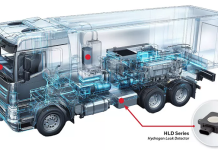Abstract
India’s National Hydrogen Mission aims to lead in green hydrogen production, with stringent emission standards, fostering a step-by-step transition in key sectors for a decarbonized future.
Key Role of Hydrogen in Decarbonisation
The Government of India is moving forward with the definite agenda for decarbonizing its economic sectors to fall in line with the global decarbonisation agenda and achieve net zero emissions by the year 2070. The National Hydrogen Mission has been instituted with the aim of making India a hub for the production and export of green hydrogen and thus being a self-reliant and energy-independent nation. The Prime Minister Narendra Modi announced that India will be an energy-independent nation by 2047 where green hydrogen will play an active role as a clean fuel.
This is a landmark initiative towards a decarbonized world among the developing countries and focuses on taking action along with the developed countries in a matter of great global concern as mitigating the impacts of climate change. India and China, both populous countries, are also major emitters of carbon dioxide to the environment. Therefore, any successful initiative from these countries will impart a greater momentum to achieve global carbon neutrality which is being constantly reviewed at the COP summits.
India’s leadership in this matter started with the setting up of the National Hydrogen Mission in 2021 and its deliberations to decarbonize each of the economic sectors. Even today, bulk of the energy production in India comes from coal, which is the most emission intensive input for power generation. Since a majority nearly 70% of our population is young and therefore aspirational, our development aspirations cannot be put on hold in the short-term and thus the use of coal as a fuel and feedstock cannot be done away. Instead, the government envisages a gradual transition to greener options for power generation and decarbonize the grid.
National Green Hydrogen Mission
It is in this context, and in a recent significant move, that the National Green Hydrogen Mission, the Ministry of New and Renewable Energy (MNRE), has notified the Green Hydrogen Standard for India specifying the emission thresholds during its production.
The definition includes green H2 production through water electrolysis as well as biomass processing. It defines green hydrogen as having emission of not more than 2 kg of CO2 equivalent / kg of H2 taken as an average over the last twelve month period, both for electrolysis based and biomass based plants. This also includes cumulative emissions during upstream and downstream processing such as water treatment, electrolysis, biomass processing, gas purification, drying and compression of hydrogen. Detailed methodology for measurement, reporting, monitoring, on-site verification, and certification of green hydrogen and its derivatives shall be specified by the Ministry of New & Renewable Energy. The Bureau of Energy Efficiency (BEE) in the Ministry of Power is entrusted with the accreditation agencies for the monitoring, verification and certification for Green Hydrogen production projects.
Investment required for manufacturing an estimated 5 million MT of green hydrogen for India by 2030 can be met only if there are clear and transparent guidelines with regard to the technology and specifications of the product and the incentives available in the short term till increase in demand justify economies of scale production. Earlier, we were confronted with such debacles in the fertilizer industry for years – split up of hydrocarbons used as fuel and feedstock and computation of specific energy consumption which lacked definitive guidelines. A sharp definition of the product clearly specifying exact battery limits including methodology for measurement will be needed. As of now, there are no global standards available for green hydrogen and several authors rely on the methodology developed by the International Partnership on Hydrogen and Fuel Cells in the Economy. Compared to the US, EU or Japan specifications so far published, it seems that the Indian standard is more stringent.
Accounting of Emissions
A pertinent question regarding quantification of emission inventory in this context is how to deal with the mineralisation of carbon dioxide produced and accounting of emissions thereof. If the plant complex uses part or full of the CO2 produced its net direct atmospheric emission reduces. Thus the use of carbon dioxide to produce urea in ammonia-urea complex reduces the emissions from the ammonia plants to the atmosphere. A European Union court ruled that carbon dioxide, which is subsequent to its production, chemically bound in other products and thus not emitted into the atmosphere, is not to be included in the emissions of the carbon dioxide producing plant of first instance (Schaefer Kalk GmbH & CO, KG v Bundes Republik Deutschland [2017] EU ECJ C-460/15, on 19 January 2017)
The other point is the stipulation in the MNRE notification to consider a 12 month average of emissions in the accounting of the 2 kg/ ton limit. Here the operators enjoy the choice of using green power when it becomes convenient to them. In fact, it would be prudent to run the plant always on green power and occasional shift to grid power shall be resorted to only under absolute conditions of disruptions in the green grid. A monthly accounting of average emissions would have been fair enough.
Some circles have expressed doubt whether this definition covers the emissions associated with the electricity or biomass used in the process.As the notification is clear that it includes emissions both in the upstream and downstream of generation of hydrogen, there is little room for such an apprehension.
The entire exercise is intended to go ahead with the decarbonisation agenda in an affordable manner to the manufacturing sectors. Serious efforts are to be undertaken to continuously reduce the cost of renewable power, foster electrolyser development and build reliable hydrogen infrastructure across the country. Besides, apart from transportation, there shall be a step-by-step transition plan for high emission sectors such as fertilisers, steel, cement, chemicals and petrochemicals. Industry expertise already at hand – in production, handling, storage, distribution, safety etc of hydrogen – shall be pooled and effectively utilised by the Hydrogen Mission.
































